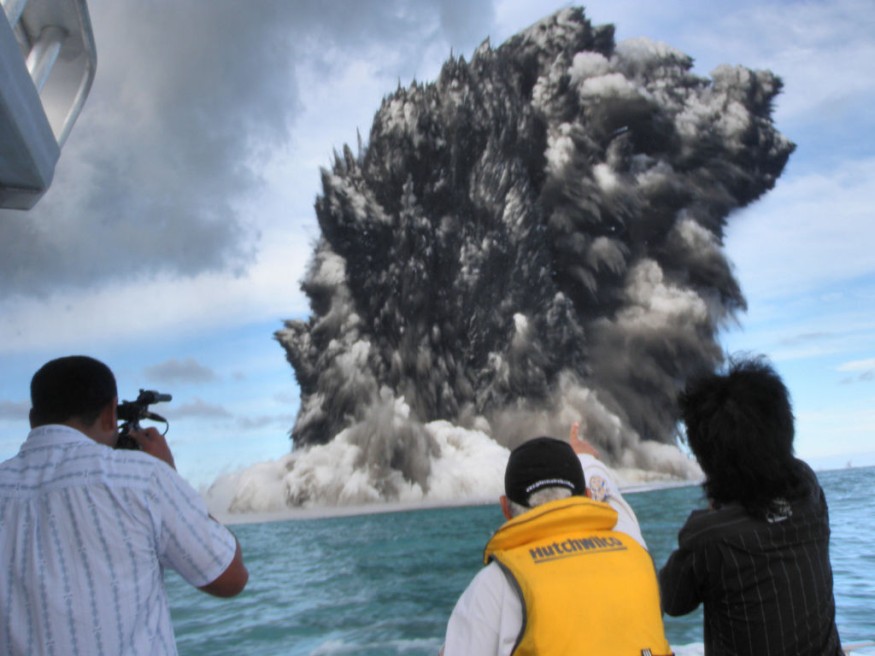Meteorologist Kevin Hamilton recently reported that the Hunga Tonga-Hunga Ha'apai eruption was very powerful that it led the atmosphere to ring like a bell, although at a frequency very low to hear.
As indicated in The Conversation report, Hamilton described the eruption as a "phenomenon first theorized more than two centuries ago."
The meteorologist has studied the global atmosphere's oscillations for nearly 40 years. The expansion of the wave from the Tonga eruption was described as a particularly spectacular example of the phenomenon of worldwide propagation of atmospheric waves, which has been observed following other historic explosive occurrences which include nuclear tests.
The Tonga eruption reached an explosive crescendo on January 15, 2022. Its quick release of energy powered an ocean tsunami that caused impairment as distant as the United States West Coast, although it produced pressure waves as well, in the atmosphere that rapidly spread all over the world.
ALSO READ : Scientists Tests Laws of Friction To Understand Caldera Collapse During Kilauea Volcano Eruption in 2018

Complicated Atmospheric Wave Pattern
Essentially, the atmospheric wave pattern near the eruption was very complicated, although thousands of miles away it occurred as an isolated wavefront that traveled horizontally at more than 650 miles per hour as it spread outward.
NASA chief scientist James Garvin at the Goddard Space Flight Center said in an NPR report that the space agency approximated the blast was roughly 10 megatons of TNT equivalent, approximately 500 times as powerful as the bomb dropped during World War II on Hiroshima, Japan.
From satellites observing with infrared sensors above, the wave looked akin to a ripple generated by dropping a stone in a pond.
The pulse recorded as registered as perturbations in the atmospheric pressure that lasts several minutes as it moved over North America, Europe, India, as well as many other places all over the world.
People followed the pulse's progress online in real-time as spectators posted to social media their barometric observations. Additionally, the wave spread all over the world and back approximately 35 hours.
Great Eruption of Mount Krakatoa
In a similar report, Space.com specified that the first such pressure wave that enticed scientific attention was produced through Indonesia's Mount Krakatoa great eruption in 1883.
The Krakatoa wave pulse was discovered in barometric observations at sites all over the world. In connection to this, communication was reported to be slower in such days, certainly though within a few years, scientists had integrated the various distinctive observations and were able to plot on a world map the spread of the pressure front in the hours and even days following eruption.
The wavefront moved outward from Krakatoa and was seen making at least three full trips around the globe. The Royal Society of London came out with a series of maps that illustrate the spread of the wavefront in a well-known 1888 report on the eruption.
The waves observed following Krakatoa or the recent Tonga eruption are very low-frequency sound waves. The spread takes place as local pressure changes generate the force on the adjacent air, which then hastens, resulting in compression or expansion with accompanying pressure changes, which in turn is forcing air farther along the path of the wave.
In humans' normal experience with sound waves of higher frequency, the sound is expected to travel in straight lines, for example, directly from an exploding firework to an onlooker's ear on the ground.
However, such global pressure pulses have the uniqueness of spreading only horizontally, and so bending as they track the Earth's curvature.
Related information about the powerful Tonga eruption is shown on The Secrets of the Universe's YouTube video below:
RELATED ARTICLE : Tonga Underwater Volcano Erupts Again; Satellite Images, NOAA Report Reveal Eruption is 7X More Powerful Than the Last Outburst
Check out more news and information on Volcanoes in Science Times.
© 2025 ScienceTimes.com All rights reserved. Do not reproduce without permission. The window to the world of Science Times.











